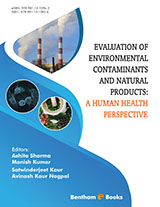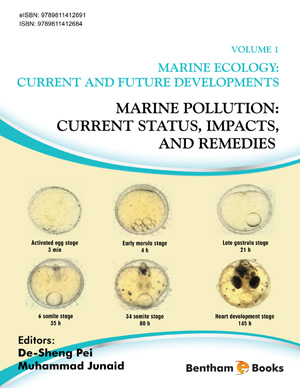Abstract
Contaminant-induced harmful effects are a global concern. Liver is the main site of xenobiotic metabolism and plays a vital role in averting accumulation of a wide range of compounds by converting them into a form suitable for elimination. Phase I drug metabolizing enzymes, primarily cytochrome P450s carry out bioactivation of carcinogens, thus converting them into electrophilic species which are genotoxic and cytotoxic. These reactive intermediates form protein adducts and induce DNA and RNA damage. Phase II drug metabolizing enzymes, such as glutathione-S-transferases, UDP-glucuronosyl transferases, sulfotransferases and N-acetyltransferases detoxify the reactive electrophilic species by conjugating these hydrophobic intermediates to a water-soluble group, thus masking their reactive nature and allowing subsequent excretion. Beneficial effects of natural dietary compounds in detoxification and elimination have been demonstrated in various studies. They have been reported to be effective in inhibiting chemically-induced carcinogenesis. Phytochemicals are known to influence the biotransformation of xenobiotics and may play an important role in reducing their toxicity and carcinogenicity. Indoles, isothiocyanates, allium organosulfur compounds, flavonoids, phenolic acids, terpenoids and psoralens may alter the levels of Phase I and Phase II drug metabolizing enzymes by affecting the transcriptional rates of their genes, the turnover rates of specific mRNAs or enzymes or the enzyme activity by inhibitory or stimulatory actions. Agents that preferentially activate Phase II over Phase I enzymes are considered as promising chemopreventives. Phase I metabolism involves oxidation, reduction or hydrolysis reactions via cytochrome P450 enzymes and lead to the conversion of drugs to more polar (water soluble) active metabolites by unmasking or inserting a polar functional group such as -OH, -SH and –NH2. Xenobiotics metabolized via Phase I reactions have longer halflives. Phase II metabolism involves conjugation reactions such as glucuronidation, acetylation and sulfation. Conjugation reactions increase water solubility of drug by adding a polar moiety thus converting them into water soluble inactive metabolites. The present book chapter discusses the interaction between phytochemicals and xenobiotic metabolizing enzymes in detoxification of harmful exogenous compounds which have been implicated in carcinogenesis.
Keywords: Aflatoxin B1, Aldoketoreductase, Benzo[a]pyrene, Carbon Tetrachloride, Cytochrome P450 Monooxygenase, 7, 12-dimethylbenz (a) anthracene, 1, 2-dimethyl hydrazine, Epoxide Hydrolase, Flavin Containing monooxygenase, Gamma Glutamyl Transferase, Glucose-6-phosphate dehydrogenase, Glutathione Peroxidase, Glutathione Reductase, Glutathione-Stransferase, Hamster Buccal Pouch, Hepatocarcinogenesis, Malondialdehyde, Nuclear Factor-like 2/Antioxidant Response Element, Phase I & II, Polycyclic Aromatic Hydrocarbon, Xenobiotics.









